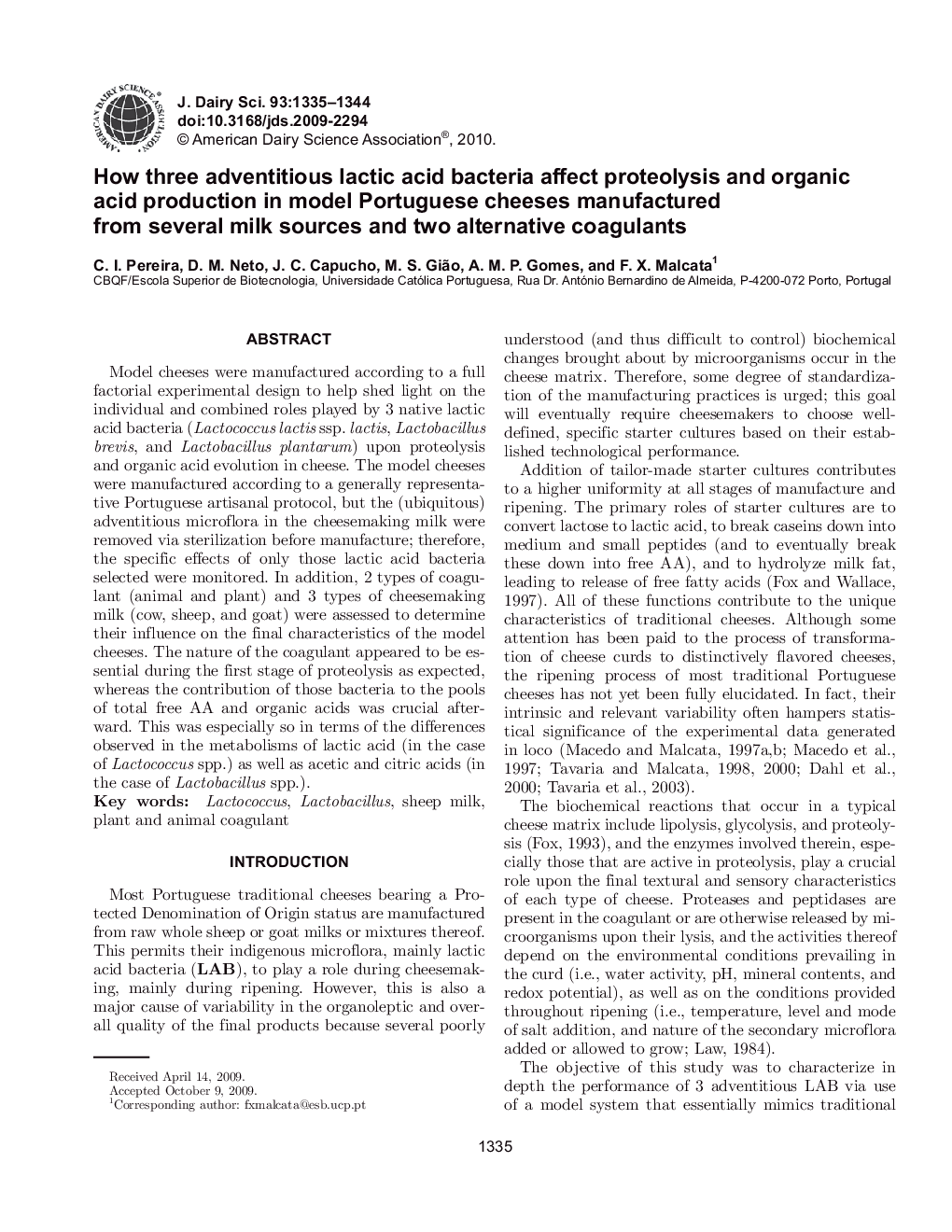| Article ID | Journal | Published Year | Pages | File Type |
|---|---|---|---|---|
| 10982368 | Journal of Dairy Science | 2010 | 10 Pages |
Abstract
Model cheeses were manufactured according to a full factorial experimental design to help shed light on the individual and combined roles played by 3 native lactic acid bacteria (Lactococcus lactis ssp. lactis, Lactobacillus brevis, and Lactobacillus plantarum) upon proteolysis and organic acid evolution in cheese. The model cheeses were manufactured according to a generally representative Portuguese artisanal protocol, but the (ubiquitous) adventitious microflora in the cheesemaking milk were removed via sterilization before manufacture; therefore, the specific effects of only those lactic acid bacteria selected were monitored. In addition, 2 types of coagulant (animal and plant) and 3 types of cheesemaking milk (cow, sheep, and goat) were assessed to determine their influence on the final characteristics of the model cheeses. The nature of the coagulant appeared to be essential during the first stage of proteolysis as expected, whereas the contribution of those bacteria to the pools of total free AA and organic acids was crucial afterward. This was especially so in terms of the differences observed in the metabolisms of lactic acid (in the case of Lactococcus spp.) as well as acetic and citric acids (in the case of Lactobacillus spp.).
Keywords
Related Topics
Life Sciences
Agricultural and Biological Sciences
Animal Science and Zoology
Authors
C.I. Pereira, D.M. Neto, J.C. Capucho, M.S. Gião, A.M.P. Gomes, F.X. Malcata,
